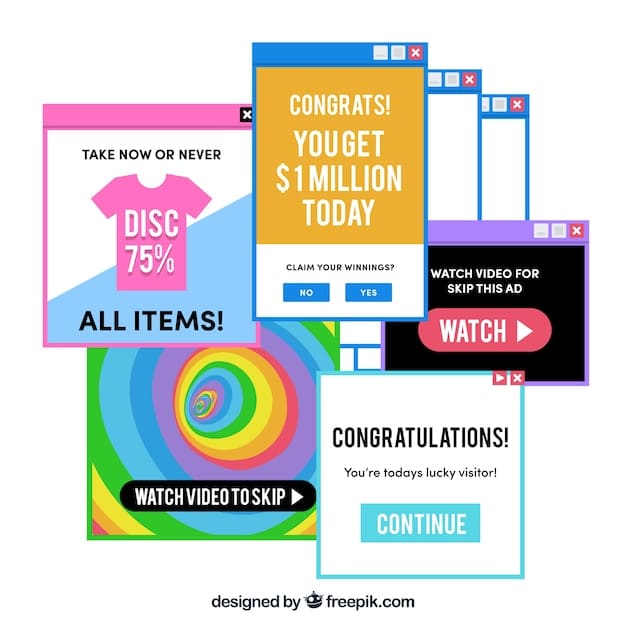The Ethics of Viral Challenges: Are We Pushing Boundaries Too Far?

Anúncios
The Ethics of Viral Challenges: Are We Pushing the Boundaries Too Far? Viral challenges, while often entertaining and engaging, raise significant ethical questions regarding safety, exploitation, and potential long-term consequences for participants and viewers.
The internet is awash with viral challenges, from the seemingly harmless to the downright dangerous. But the ethics of viral challenges: are we pushing the boundaries too far? It’s a question that demands careful consideration as these trends gain popularity and influence.
Anúncios
Understanding the Phenomenon of Viral Challenges
Viral challenges have become a staple of internet culture, offering a quick path to fame and engagement. But what exactly makes a challenge go viral, and what are the underlying motivations driving participation?
The Anatomy of a Viral Challenge
At its core, a viral challenge is a call to action, inviting individuals to complete a specific task and share their attempt online. This can range from a dance routine to a charitable act.
Anúncios
Motivations Behind Participation
The reasons people engage in viral challenges are varied. Some seek validation and recognition, while others are driven by a sense of community or the desire to support a cause.
- Desire for online fame and recognition.
- Sense of belonging and participation in a community.
- Support for charitable causes or social issues.
- The thrill of the challenge itself and pushing personal boundaries.
However, this pursuit of viral fame can sometimes overshadow ethical considerations, leading to challenges that are harmful or exploitative.

The Ethical Concerns Surrounding Viral Challenges
The popularity of viral challenges doesn’t automatically equate to ethical soundness. Many challenges raise significant concerns about safety, exploitation, and potential psychological harm.
Safety and Physical Risks
One of the most pressing ethical concerns is the potential for physical harm. Some challenges involve dangerous stunts or activities that can lead to serious injuries or even death.
Exploitation and Privacy Issues
Viral challenges can also be exploitative, particularly when they involve vulnerable populations or when participants are unaware of how their content might be used.
- Challenges that encourage risky behavior for views.
- Lack of informed consent, especially with younger participants.
- Potential for privacy violations through data collection.
- The spread of misinformation and harmful content.
Moreover, the pressure to participate and conform to viral trends can have negative psychological effects, especially on young people.
The Role of Social Media Platforms
Social media platforms play a crucial role in the spread and amplification of viral challenges. Their algorithms and community guidelines can either promote responsible content or contribute to the dissemination of harmful trends.
Algorithmic Amplification
The algorithms used by social media platforms often prioritize content that generates high engagement, regardless of its ethical implications. This can lead to the rapid spread of dangerous or harmful challenges.
Enforcement of Community Guidelines
While most platforms have community guidelines that prohibit harmful content, enforcement can be inconsistent and reactive rather than proactive.
This creates a situation where harmful challenges can gain traction before being removed, potentially causing significant damage.

The Impact on Mental Health and Well-being
Beyond physical safety, viral challenges can also have a significant impact on mental health, particularly among young people who are more susceptible to peer pressure and social validation.
Pressure to Conform
The desire to fit in and gain social acceptance can drive individuals to participate in challenges, even if they feel uncomfortable or unsafe.
Cyberbullying and Online Harassment
Viral challenges can also create opportunities for cyberbullying and online harassment, as participants may be targeted for their appearance, performance, or beliefs.
- Increased anxiety and stress related to social media validation.
- Body image issues and feelings of inadequacy.
- Exposure to online harassment and cyberbullying.
- The development of unhealthy social comparison habits.
Furthermore, the constant exposure to curated online personas can lead to feelings of inadequacy and low self-esteem.
Legal and Regulatory Considerations
The rise of harmful viral challenges has also raised legal and regulatory concerns, with lawmakers and advocacy groups calling for greater accountability from social media platforms and challenge creators.
Liability and Accountability
Determining who is responsible when a viral challenge leads to harm can be complex. Is it the challenge creator, the social media platform, or the participant themselves?
Legislative Efforts
Some jurisdictions have already begun exploring legislation to address the issue of harmful online content, including viral challenges.
These efforts aim to create a framework for holding individuals and companies accountable for propagating dangerous trends.
Promoting Ethical Participation in Viral Challenges
While viral challenges can pose risks, they also have the potential to be a force for good. By promoting ethical participation and responsible content creation, we can harness the power of viral trends for positive change.
Encouraging Critical Thinking
One of the most important steps is to encourage critical thinking and media literacy among individuals, particularly young people.
Promoting Positive Challenges
Another approach is to actively promote challenges that focus on positive values, such as kindness, creativity, and community engagement.
The online world is filled with fads, but ethical considerations shouldn’t become one of them; critical evaluation of each challenge can encourage safe enjoyment.
| Key Element | Brief Description |
|---|---|
| ⚠️ Safety Concerns | Many challenges involve physical risks, leading to injuries. |
| 🛡️ Protective Measures | Critical thinking and media education can prevent harm. |
| ⚖️ Legal Impacts | Legal efforts seek accountability for viral challenge outcomes. |
| ❤️ Mental Well-being | Challenges can affect mental health due to conformity pressures. |
Frequently Asked Questions
A challenge is generally considered unethical if it promotes unsafe behavior, exploits participants, or infringes on privacy. It can also be unethical if it spreads misinformation or causes emotional harm.
Algorithms prioritize content that gains quick and massive traction, which often amplifies dangerous challenges, as engagement is prized over safety and ethical considerations.
Encourage open dialogue, teach media literacy, and ensure they understand the potential risks involved in chasing online fame. Monitoring their online activity can also ensure safety.
Determining liability is complex and can depend on specifics, but challenge creators may be responsible if the activity promotes harm that others partake in or if there is negligence.
Ethical challenges include those that promote creativity, environmental awareness, or charitable engagement. These initiatives encourage positive interactions and mindful online behavior.
Conclusion
As viral challenges continue to evolve, a commitment to ethical behavior is crucial. By fostering critical thinking, promoting positive content, and demanding accountability, we can steer viral trends towards outcomes that enrich, rather than endanger, society.





